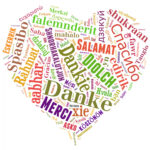Pakistan is a country with a long, rich history and vibrant culture. As I traveled through some of its major cities, I was amazed by the beautiful architecture, ancient landmarks, and welcoming spirit of the Pakistani people. I want to say right away that without a mobile translator https://lingvanex.com, it would have been difficult for me to understand the local language, as people here speak Urdu and don’t know English very well.
Lahore: City of Gardens with a Mughal Past
My journey began in Lahore, the capital of the Punjab province. As one of Pakistan’s largest cities, Lahore combines its Mughal past seen in monuments like the Badshahi Mosque and Lahore Fort with modern amenities. The city boasts over 70 parks and gardens. I took an early morning walk through Shalimar Gardens, built in 1642, taking in its tranquil fountains and gardens on over 80 acres of land. That afternoon I explored the massive Lahore Fort containing Sheesh Mahal and Naulakha Pavilion combined intricate artwork across over 20 hectares.
Islamabad: Pakistan’s Green Capital
Next, I flew to Islamabad, Pakistan’s capital city since 1967. Islamabad has been praised as one of the greenest cities in Pakistan as over 20% of its land is forest and parks. I could understand why as I rented a bike and cycled past lush green spaces like Rose & Jasmine Garden. In the heart of the city lies the impressive Faisal Mosque, which can hold over 300,000 worshippers with its giant concrete dome and four 88m high minarets.

Multan: Home of Sufi Shrines
I then headed south to Multan located along the Chenab River. Multan has a rich Sufi culture, exemplified by ornately decorated shrines like the Shams Tabrez shrine covered in blue tiles. I spent an afternoon getting lost in the narrow alleys of the Old City area, taking in the unique architectural facades. The next day I visited Multan Fort, originally built in the 800s AD by the Abbasids, to see remnants of the old city walls, mosque and tombs.
Journeying Across Language Barriers
As an English speaker traveling in Pakistan, I relied on the translation tool to help me navigate and better understand the country’s rich history. This app was invaluable in converting text between English and Urdu https://lingvanex.com/translation/english-to-urdu when reading plaques and information at landmarks. I could simply hold up my phone camera to instantly translate signs and descriptions into English. While technology can never replace human understanding, these translation aids helped break down language barriers, allowing me to more fully immerse myself and converse with locals about their powerful history and diverse culture seen across Pakistan’s major cities. With the assistance of this digital translator, I could gain deeper insights into my cross-cultural journey.
My journey through Pakistan revealed hidden gems showcasing the country’s diverse history, culture, and natural beauty. While Pakistan’s cities offer modern conveniences, their ancient landmarks and warm hospitality leave a lasting impression.
